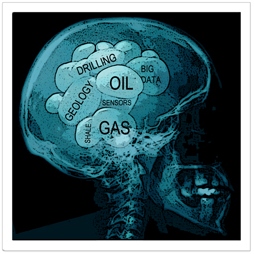I’ve been told I have rocks for brains before, but right now I have rocks on the brain – the kind that are millions of years old and contain precious stores of oil and gas.
One reason I have petroleum on my mind is that I’ve just returned from Brazil, where the oil and gas industry is the largest contributor to the economy. Naturally, discussions around high-performance analytics and energy figured prominently in my meetings – that is, when we weren’t talking FIFA World Cup.
Another reason I’m energized about the topic is a recent glowing endorsement from Petrobras. The Brazilian energy giant has its sights set on total resource recovery – the ability to leave no stone unturned when it comes to finding and recovering oil and gas resources. To get there, they’re using SAS® Analytics to optimize the placement of wells and extend the life of mature fields.
And it’s working. Their senior geologist recently called SAS “100 percent reliable.” Now that’s a testimonial!
Companies like Petrobras need that kind of accuracy because they’re investing billions in their projects. They have to make smart decisions about where to look – and where not to look. When they get it right, the rewards are substantial. On average, Petrobras fields are producing 230,000 more barrels per day after using SAS.
That kind of success makes me happy. Wanting to learn more, I picked up Keith Holdaway’s new book, Harness Oil and Gas Big Data with Analytics. Among other things, it covers how geophysicists, geologists and petroleum engineers can come to view data as not a burden but a blessing – one that opens up entirely new vistas for the industry. Part of the reason the US recently overtook Saudi Arabia as the world’s largest producer of energy resources (namely gas) is that sources that had been nearly impossible to find or use are becoming much more accessible, thanks to the power of analytics.
But it isn’t just about finding oil and gas. It’s also about keeping the equipment running to pull the “black gold” out of the ground and get it on the path to consumers.
For example, steam-assisted gravity drainage is a revolutionary approach to extracting heavy and highly viscous oil from the ground. This horizontal drilling method works by using steam, gas and pressure levels that are optimized with analytical models. Analytics can also determine the optimal operational parameters that enable more efficient drilling and avoid costly downtime. Math plus heavy machinery: What’s cooler than that?
Analytics is also helping keep the industry safe. Predictive models allow engineers to see trouble brewing in pumps or refineries and address issues before they interfere with production. For example, Shell Exploration and Production is using SAS® Predictive Asset Maintenance to extend the lifespan of their equipment and prevent accidents. When the software alerts signal a performance problem, Shell can act quickly to prevent an upset.
The time and money saved allows Shell to do more exploration. (Learn more.)
From upstream exploration and production to the downstream applications of refining, logistics and retail, my friends in petroleum are getting smarter all the time about how to find the resource and get it into the tanks of consumers.
And I’m proud to say they’re doing it with the help of advanced analytics.
To learn more about the application of analytics to the oil and gas industry, read the SAS white paper.

